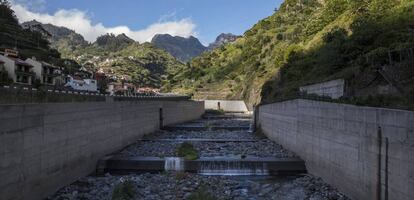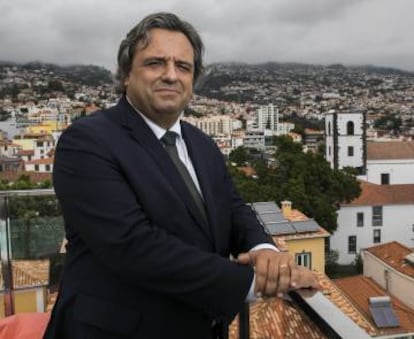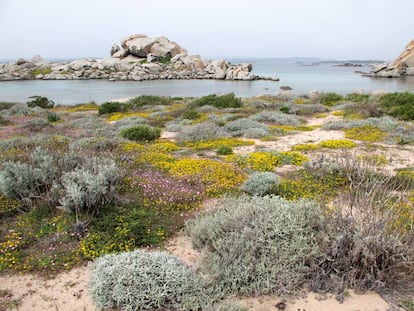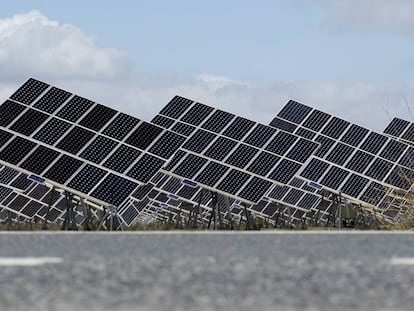How Madeira became a flood-proofed island
Thanks to EU funding, the archipelago no longer fears a repeat of the 2010 flooding which killed 49 people


When it rains on the island of Madeira, residents look nervously towards the mountains. The small community of Ribeira Brava, west of Funchal, was flooded by mud in 2010. The town, home to 12,400 people, is nestled into the coast and surrounded by mountains up to 1,000 meters tall. The two adjoining river basins and steep terrain made it easy for the downfall, loaded with tree trunks, rocks and mud, to destroy everything in its path in just a couple of hours.
According to the regional government, it was the worst catastrophe to hit the Atlantic island for 100 years. Eight years later, the island is now protected from flooding and landslides thanks to funding from the European Union.
Guida Jesús now in her 50s still gets emotional when she remembers February 20, 2010. “It was a very difficult Saturday. It kept raining and suddenly I saw rocks and bits of tree falling off the mountain,” she says in a cafeteria in front of the school where she works as a secretary. She and her husband believed they would die if they didn’t flee. The couple quickly jumped in their car to escape to Guida’s mother's house which was located high up on the mountain and better protected from the flooding. Their home was located at the point where the two river basins met. Guida knew it would only be a matter of time before it disappeared under the flood of mud.
I saw rocks and bits of tree falling off the mountain
Resident Guida Jesus
“We crossed the bridge and when I turned back to look, the house wasn't there. It had only been two or three minutes!” she says.
But worse than losing her town and seeing her home disappear under mud was believing she had lost her eldest son, Tomé, who was then 12 years old. “He was playing football and we didn't hear from him for two days,” she remembers as she tries without success to hold back her tears. Guida reunited with her son 72 hours after the flood but the memory of the trauma is still raw. Next semester, Tomé will begin studying at the prestigious Cambridge University in the United Kingdom.
Guida is just one of the 600 families (in an island of almost 255,000 inhabitants, according to the Regional Statistics Bureau of Madeira) who lost their homes, or worse, a loved one, in the floods and landslides. Forty-nine people died, eight were never found and the town suffered billions of euros in damages. Luckily, regional authorities were quick to respond.

The island now has infrastructure to contain possible flooding thanks to EU aid from the Solidarity Fund, European Regional Development Fund (ERDF) and Cohesion Fund, but most of all thanks to the speedy response of citizens and the country’s City Halls. Locals feel protected against natural disasters they have no control over.
Retention dams are located on the three valleys that run through the island from north to south (San João, Santa Luzia and João Gomes) and act as filters to stop trees, rocks and sediment from falling at full speed on the towns below. The distance between the cement blocks, which make up the dam, decreases as the blocks reach the sea. This means that biggest dangers are trapped first, leaving branches and other debris to be caught lower down, explains a Sérgio Lopes, a geographer at the island’s Regional Secretary of Teams and Infrastructure.
“It’s about progressively retaining solid material,” he says, adding that the dam has reduced the risk of another catastrophe by 60%.

With the EU funds, Madeira has put together a complex program of strategies to prevent a repeat of the 2010 tragedy. “Everything is much better now,” says Guida. Pine trees on the mountain tops are being replaced by nearly two million endemic species that are more resistant to forest fires and better at storing water. Canals have been built on the river basins and the river banks have been cleaned up. “None of this would have been possible without the European aid,” says Bruno Pereira, regional director of European Affairs and Foreign Cooperation, pointing with his finger the path of the flooding from a lookout point in Funchal.
The deluge made the center of Funchal, the capital of Madeira, “impassable,” says Pereira. Receiving funds from the EU Solidarity Fund was crucial to restoring normality in the area. Unlike other disasters in Portugal, Madeira responded to the needs of tens of thousands of victims in record time. But Pereira admits that receiving the EU funds was a slow process.
None of this would have been possible without the European aid
Bruno Pereira, regional director of European Affairs and Foreign Cooperation
Faced with this delay, many local authorities and private companies decided to speed up the process and raise the money needed for the cleanup (€7.5 million), moving residents into temporary shelters (€381,000) and repairs to the electric grid and energy plants (€7.2 million) on the promise that all of the money would be repaid by the Solidarity fund. “It was a question of trust,” he said. Madeira received €31.4 million from the Solidarity Fund after the floods in 2010 and €3.6 million after the fires in 2016.
Eight years later, Guida has returned to her bubblegum-colored house. “My son says it is Barbie's house,” she jokes. She is a lot calmer now, though the rain and the climate still worry her: “If it rains, I try not to think about it. [The 2010 flooding] can’t happen again. It won't happen again.”
English version by Andres Cayuela.

